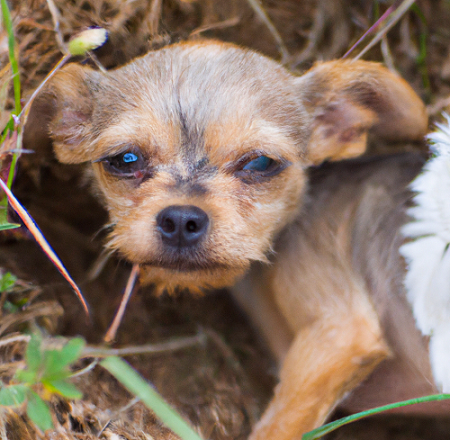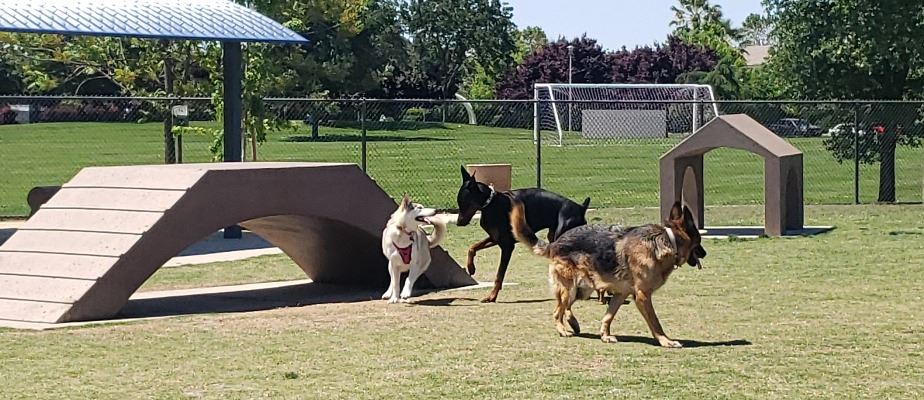Signs of Anxiety in your Dog and what you can do if they’re scared

Dogs, like humans, can experience anxiety. While the signs of anxiety may vary from dog to dog, here are 10 of the most common indicators that your dog may be anxious:
1. Excessive barking: If your dog is barking more than usual or is barking excessively in certain situations, it may be a sign of anxiety.
2. Restlessness: Dogs with anxiety may show signs of restlessness, such as pacing back and forth or being unable to settle down.
3. Panting and pacing: Increased panting and pacing can be signs of anxiety in dogs. If your dog is pacing in a repetitive pattern, it could be an indication of anxiety. I know that my dog Koko will constantly pant when she is nervous in certain stressful situations.
4. Shaking or trembling: Dogs may shake or tremble when they are anxious or feeling stressed. When I take my dog for a ride in the car she shakes and trembles a lot for a few minutes until she gets situated. A booster dog seat so she can see out the window helped, while also taking her on more car rides so she was able to get used to it more often.
5. Destructive behavior: An anxious dog may engage in destructive behavior, such as chewing on furniture, shoes, or other household items.
6. Excessive drooling: If you notice that your dog is drooling more than usual, especially in situations that cause stress, it could be a sign of anxiety.
7. Avoidance or withdrawal: Dogs with anxiety may try to avoid certain situations or people. They may hide, cower, or seek a safe place to retreat to. I’ve caught Koko hiding under my desk or in a corner of a particular room she’s comfortable in. Try to give your dog a little treat and hold them by you to comfort them through it.
8. Changes in appetite: Anxiety can affect a dog’s appetite. They may eat less or lose interest in food altogether.
9. Aggression or fearfulness: An anxious dog may display aggressive behavior or become fearful in situations they find stressful. This can include growling, snapping, or even biting.
10. Excessive licking or grooming: Dogs may excessively lick themselves or groom a specific area when they are anxious or stressed. They may also excessively lick their paws when feeling nauseous, or have to go potty, so tune in!
Also, remember it’s important to note that these signs can also be indicative of other medical conditions, so it’s always a good idea to consult with a veterinarian if you suspect your dog is experiencing anxiety. A veterinarian can help determine the cause of the anxiety and provide appropriate guidance and treatment options. There are several treatments and strategies that can help alleviate anxiety in dogs. Here are some common approaches you can take:
1. Behavioral training: Behavior modification techniques, such as desensitization and counterconditioning, can be used to help dogs overcome their anxiety triggers. Gradually exposing the dog to the feared situation or stimulus in a controlled and positive manner can help them learn to associate it with positive experiences. For example, when I mentioned about giving Koko more rides in the car so she will get more used to the environment and situation.
2. Environmental management: Creating a calm and safe environment for your dog is important. Provide a designated quiet space where they can retreat when they feel anxious. Use white noise or calming music to mask external noises. Consider using a crate or a safe den-like area that the dog can go to for comfort. Koko grew up in my bedroom, so her comfort safe space is under my desk. It sometimes saddens me to see her there, but I remind myself that is where she feels the safest.
3. Physical exercise: Regular exercise helps dogs release pent-up energy and promotes overall well-being. Engaging your dog in daily exercise, such as walks, runs, or play sessions, can help reduce anxiety levels and provide mental stimulation.
4. Mental stimulation: Boredom can contribute to anxiety in dogs. Provide interactive toys, puzzle feeders (that also help with slowing your dog down from eating too fast, like Koko), and engaging activities to keep your dog mentally stimulated. This can help redirect their focus and reduce anxiety.
5. Medication and supplements: In severe cases, your veterinarian may prescribe anti-anxiety medications to help manage your dog’s anxiety. These medications should always be used under the guidance of a veterinarian. Additionally, natural supplements like chamomile, valerian root, or L-theanine can have calming effects on dogs, but their efficacy may vary.
6. Calming aids: There are products available that can help calm anxious dogs. Thundershirts, which provide gentle pressure around the dog’s body, can help reduce anxiety in some cases. Adaptil, a synthetic pheromone product, is designed to mimic the calming effects of a mother dog’s pheromones and is available in the form of collars, sprays, and diffusers.
7. Professional help: If your dog’s anxiety is severe or not improving with home-based strategies, it may be beneficial to seek the assistance of a professional dog trainer or a veterinary behaviorist. They can provide tailored guidance and develop a comprehensive treatment plan for your dog’s specific needs.
Remember, every dog is unique, and it may take some trial and error to find the most effective treatment for your dog’s anxiety. There are medications that can help relieve the stresses of your pet so they feel more relaxed. Be patient, consistent, and consult with a veterinarian or a qualified professional to ensure the well-being of your furry friend.
If you would like to buy the Thundershirt or Koko’s puzzle bowl for feeding you can click the proper buttons below. We bought the puzzle bowl because she was eating her dry dog food too fast which expanded too much in her stomach, and resulting in her having stroke-like systems and sometimes vomiting. To remedy this we added more servings with less food throughout the day, and we bought her the puzzle bowl which she got used to and loves!






